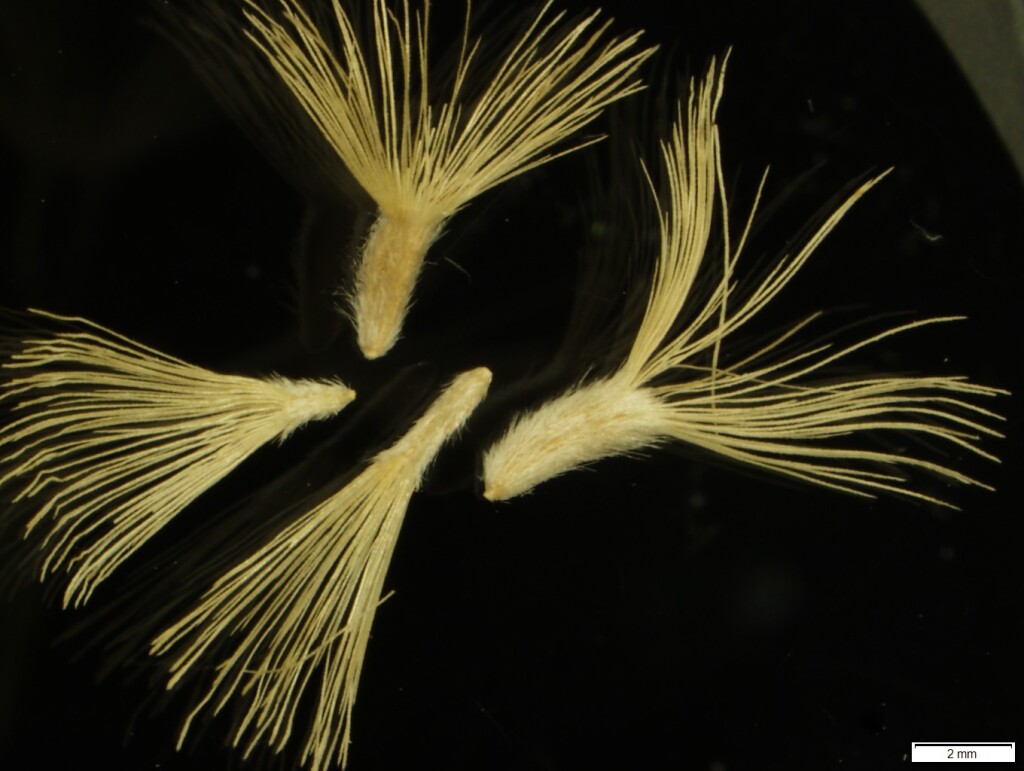Olearia pimeleoides
(DC.) Benth. Pimelea Daisy-bushErect shrub to c. 1 m high; branchlets and leaf undersurfaces densely white-tomentose, usually mixed with a few resin droplets. Leaves alternate, subsessile, obovate to narrowly obovate or elliptic, 3–15 mm long; 1–6 mm wide, discolorous, green and glabrous or sparsely pubescent above. Capitula c. 15–35 mm diam., sessile, solitary (rarely paired) and terminal; involucre broadly conical to hemispherical, 6–7.5 mm long; bracts 3–5-seriate, graduating, the outer wholly white-tomentose, the inner often glabrous except for a subapical cottony patch, often purple-tipped. Ray florets 8–25, white, ligules 8–20 mm long; disc florets c. 14–50, pale yellow. Cypsela narrowly obovoid, 1.5–3 mm long, densely sericeous, obscurely ribbed; pappus pale, 7–9 mm long. Flowers Aug.–Oct.
LoM, MuM, Wim, VRiv, MSB, RobP, MuF, Gold, CVU, NIS. Also WA, SA, Qld, NSW. In Victoria common in mallee, box and cypress-pine woodlands of the north and north-west.
Plants from the Brisbane Ranges and nearby areas previously regarded as Olearia pimeleoides are now referred to O. minor.
Walsh, N.G.; Lander, N.S. (1999). Olearia. In: Walsh, N.G.; Entwisle, T.J., Flora of Victoria Vol. 4, Cornaceae to Asteraceae, pp. 886–912. Inkata Press, Melbourne.
 Spinning
Spinning


